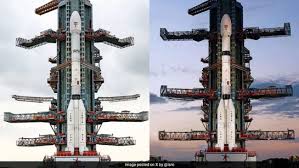“India and US Consider Agreement on Medical Devices and Generic Drugs : Report”
India and the United States are reportedly close to striking a deal that could ease trade restrictions on medical devices and pharmaceutical products as part of ongoing negotiations under the proposed Indo-US Bilateral Trade Agreement (BTA). According to sources familiar with the matter, India may remove certain trade barriers for American medical devices—provided Washington reciprocates by improving market access for Indian generic drugs.


India and the United States are reportedly close to striking a deal that could ease trade restrictions on medical devices and pharmaceutical products as part of ongoing negotiations under the proposed Indo-US Bilateral Trade Agreement (BTA). According to sources familiar with the matter, India may remove certain trade barriers for American medical devices—provided Washington reciprocates by improving market access for Indian generic drugs.
The discussions, which are said to be progressing “intensely” via virtual meetings, come amid long-standing concerns raised by the US regarding tariff and non-tariff barriers that limit its pharmaceutical exports to India. American medical devices currently face regulatory hurdles in India, while Indian generics encounter pricing and policy constraints in the US.
The US, which accounts for over 30% of India’s pharmaceutical exports, has so far refrained from imposing retaliatory tariffs on Indian drugs. However, former President Donald Trump recently hinted at a “major” upcoming tariff on pharmaceutical products—possibly as part of a broader sectoral strategy similar to what has been implemented for steel.
India exported drugs and pharmaceuticals worth $27.85 billion in FY24, showing a 9.7% year-on-year growth. In the first 11 months of FY25, the sector had already hit $27 billion in exports. With such a strong export performance, Indian pharmaceutical companies are being advised by officials to diversify their global presence to mitigate potential risks from any abrupt US policy shifts.
The Biden administration’s April 2 executive order outlined the US strategy on reciprocal tariffs and criticized India’s regulatory practices, stating: “India imposes their own uniquely burdensome and/or duplicative testing and certification requirements in sectors such as chemicals, telecom products, and medical devices.”
Nonetheless, both sides are aiming for a “win-win” deal. Officials suggest the first tranche of the BTA could be finalized by Q2 of FY25. As part of the deal, India may consider aligning its quality and regulatory standards with global norms, which would ease certification and approval for US products in Indian markets.
A similar precedent was set in India’s trade pact with the UAE under the Comprehensive Economic Partnership Agreement (CEPA), which included a dedicated annexure on pharmaceuticals. The agreement allowed automatic registration and marketing authorization of Indian drugs within 90 days, provided they were already approved by regulatory bodies like the US FDA, UK MHRA, EMA, or Japan’s PMDA.
India’s pharmaceutical industry is the third largest globally by volume and 14th by value, with an annual turnover of ₹4.17 lakh crore in FY 2023-24. Of this, exports accounted for ₹2.19 lakh crore, while imports stood at ₹58,440 crore.
Often referred to as the “pharmacy of the world,” India supplies nearly 20% of the world’s generic drugs, manufacturing about 60,000 generic brands across 60 therapeutic categories. Indian generics have played a key role in global health initiatives, especially in providing affordable HIV treatment.
As negotiations continue, industry watchers remain optimistic that the BTA will mark a significant step toward strengthening Indo-US trade relations and boosting the global footprint of India’s pharmaceutical sector.
Sources By Agencies







